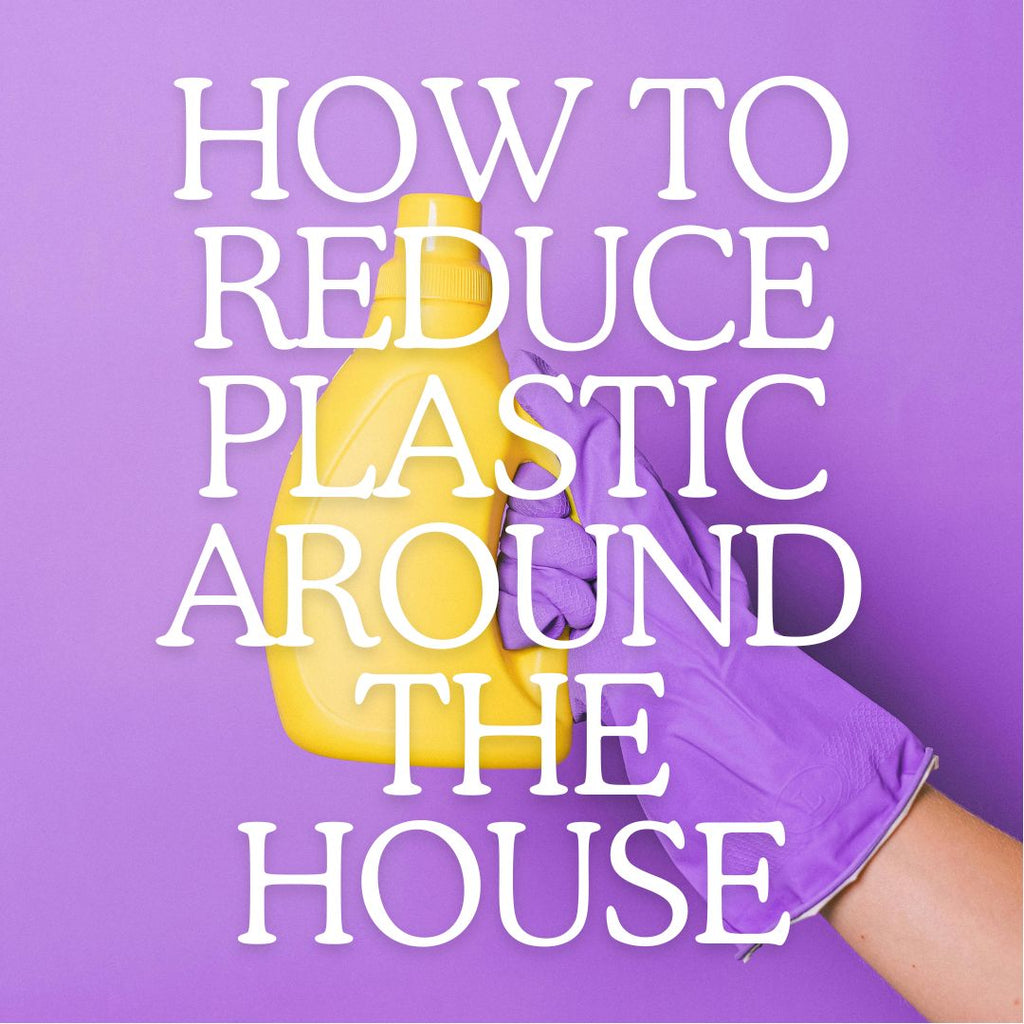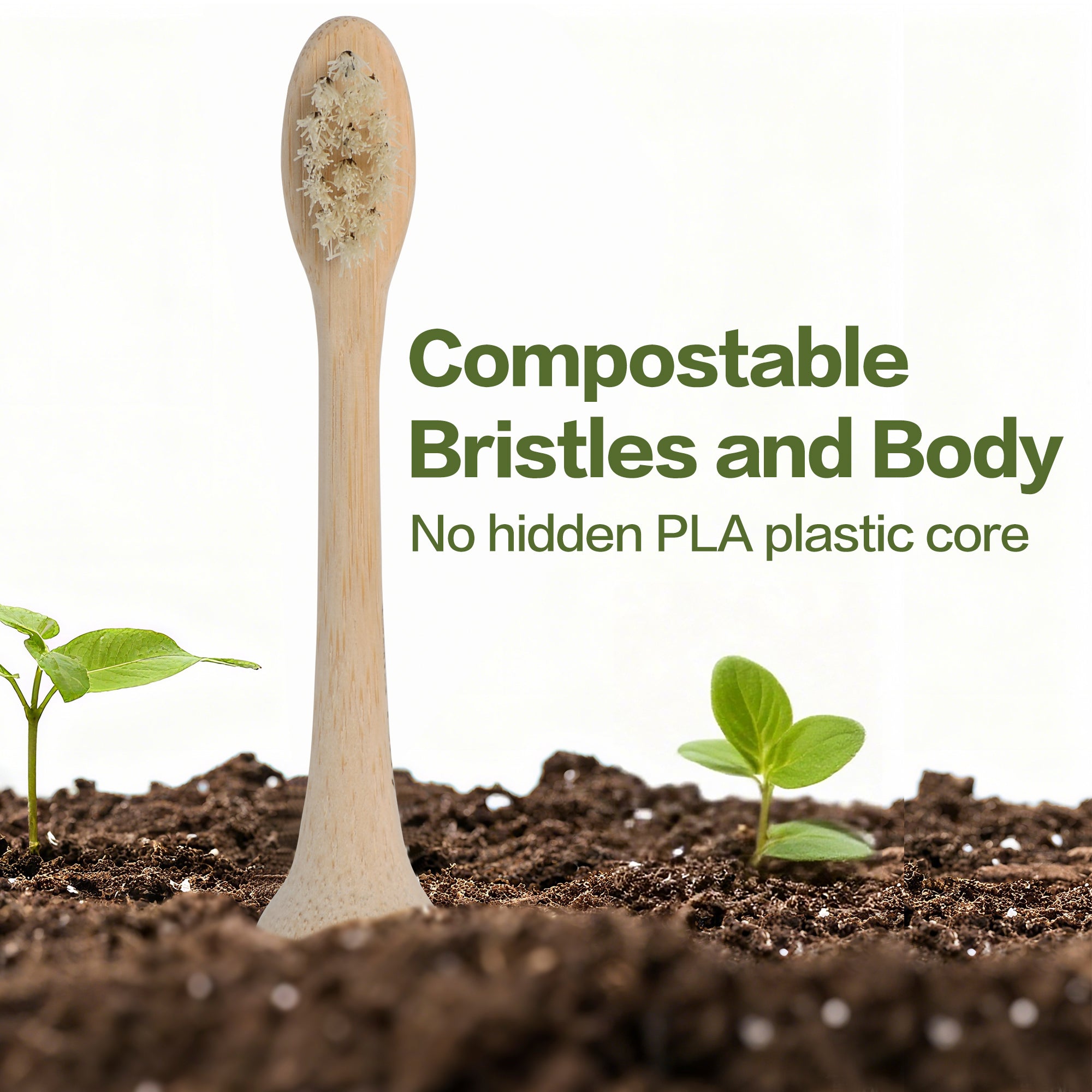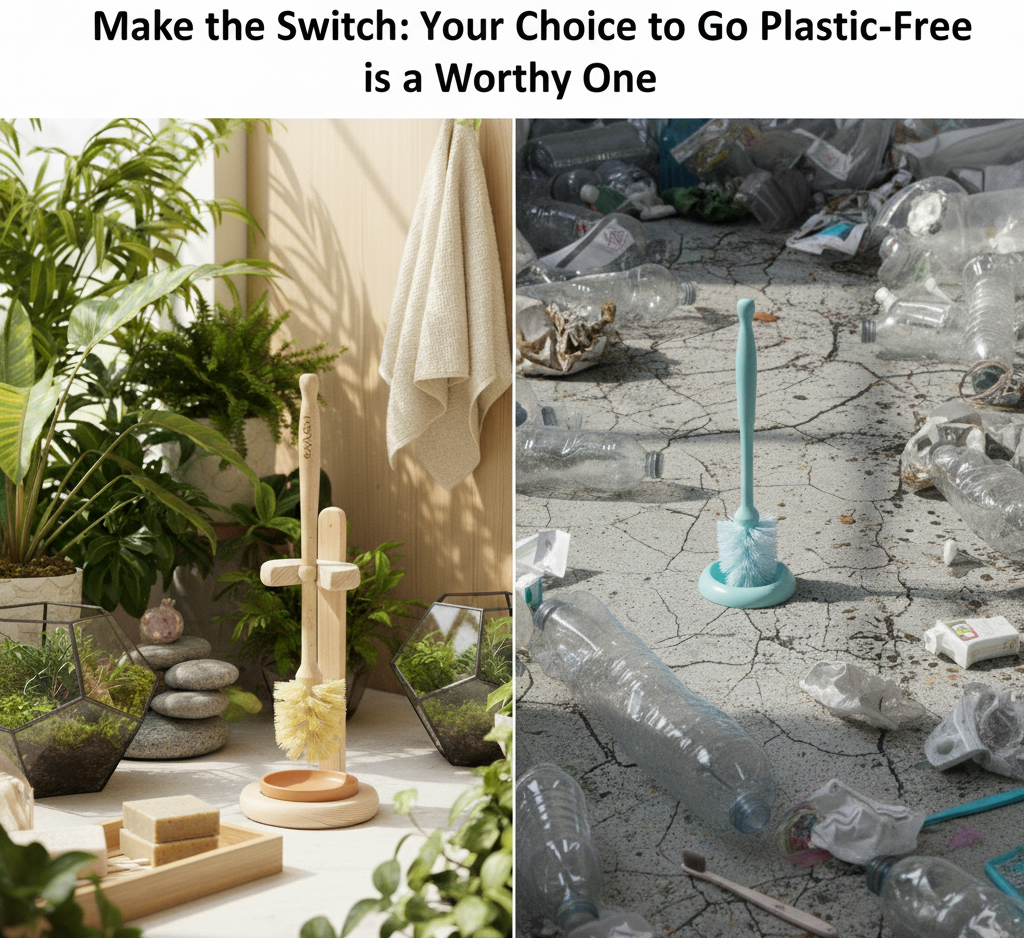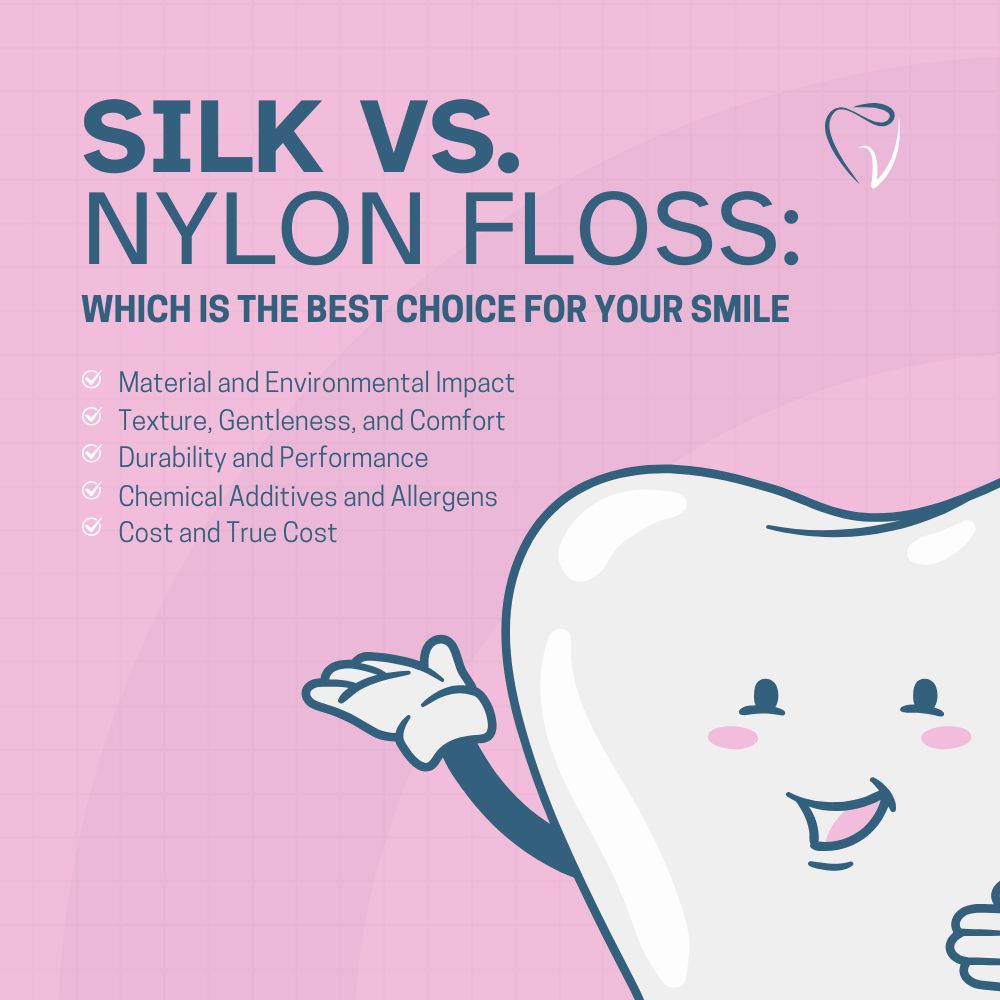Hey there, eco-warriors! Let's talk about something near and dear to our hearts: reducing plastic waste right in our own homes.
With plastic pollution becoming a global crisis, it's more important than ever to take action and ditch plastic!

Did you know that each year, a staggering 11 million metric tons of plastic find their way into our oceans? It's a mind-boggling statistic that paints a grim picture of our planet's health. But fear not! There's plenty we can do to turn the tide.
Let's kick things off with some tips straight from the trenches of a Reddit Megathread:
-
Decline the use of straws at restaurants and drive-throughs, if needed use sustainable alternatives made from bamboo or metal
-
Bring a glass jar and buy popcorn from bulk bins rather than brands with plastic packaging
-
Use a small compost bin to store food waste, to reduce garbage use
-
Buy reusable silicone zip-top sandwich bags also available from major supermarkets
-
Use bamboo toothbrushes that are sustainable and biodegradable
-
Shop more in bulk, grains, nuts, legumes, baking ingredients, cereals and many more are great options that can help you cut down on excess packaging
-
Choose products with no packaging or compostable packaging and be sure the good themselves can be actually recycled or composted like at GaiaGuy.com
-
Use reusable produce bags made from a biodegradable material like cotton, cornstarch, hemp, jute or bamboo. More Zero Waste Tips!
-
Support local, regional and nationwide legislations to ban plastic bag use**.**
-
Recycle plastic bags or bring them to recycling drop-off locations. Check plasticfilmrecycling.org
-
Save food in glass storage containers, try to use sustainable wrap alternatives such as beeswax or cotton
-
Use Done Good to find sustainable alternatives and exclusive discounts on sustainable products
-
Use reusable coffee pods and ground coffee, as single-use Coffee takes 150-500 years just to break down
-
If possible decline the use of receipts as they sometimes have a thin plastic layer. If you own a store opt to use more sustainable alternatives
-
Enjoy ice cream in a cone, not a plastic cup
-
Buy used and refurbished plastic items
-
When ordering a takeaway tell the restaurant that you don't want plastic cutlery
-
When ordering pizza tell them you don't need the little plastic table or "pizza saver"
-
Use reusable shopping bags, store them in easy to see and reach places so you don't forget about them!
-
Use vinegar from (glass containers) and water for cleaning
-
Use baking soda that comes in a cardboard box for scrubbing. So many cleaning products that come in plastic bottles can be replaced with DIY cleaning recipes.
-
If you have a sweeper-mop that uses disposable cleaning pads, use reusable pads made from cloth instead
-
Try to avoid any personal care products with "polyethene" listed as an ingredient
-
Ditch bottled water, use a stainless steel, glass or bamboo water bottle
-
Switch to plastic-free chewing gum, most gums get their texture from plastics, rubbers and waxes
-
Bring reusable food storage container to restaurants for leftovers
-
Use the CORKwatch to determine if a wine uses plastic or natural cork
-
DON’T litter, it's not worth it. Volunteer at local nature clean-up events
-
Food wrappers and containers account for 31.14% of plastic pollution by unit count. Try and build up your limit of plastic use gradually over time
-
Bring your own cup or tumbler to coffee shops, some places will even give you a discount for doing so!
-
Use cotton swabs with paper rods instead of plastic
-
When you need to buy plastic, choose (bonus points for already recycled) clear plastic bottles (for cosmetics, foods, toys etc) these are more likely to be recycled
-
Don't release balloons or plastic confetti into the air. Biodegradable confetti is a better option!
-
Plastic flip flops are forever, choose rubber, cork, jute or recycled footwear instead Good On You have an amazing directory to checkout!
-
Try bar shampoos and soaps without packaging, like the ones you can buy at Lush
-
Buy bread from bakeries that package in paper
-
Properly secure your garbage bags to prevent fly-away plastics while being transported by garbage trucks
-
Cut down on junk mail - these are often full of plastics. Check DMCAChoice to get started
-
Buy clothes made from synthetic material like polyester, acrylic, Lycra, spandex or nylon used when possible. Cotton, linen and hemp are better material options - again use Good On You’s directory - Buy second hand and embrace thrift shops.
-
Up to 20 billion pads, tampons and applicators are dumped into North American landfills annually. Try a menstrual cup instead
-
Shop at your local farmers market and bring your own bags and containers. They often use way less plastic packaging
-
Avoid buying new CDs and DVDs, stream or buy used
-
Crayola recycles all markers. Setup a ColorCycle program through a local school
-
Staples recycles electronics, ink and batteries. In Canada, Staples has partnered with TerraCycle to recycle writing utensils, too
-
Use a razor with replaceable blades instead of disposables
-
Using packing peanuts made from starch instead of Styrofoam
-
Cutting up plastic six rings still harms marine life, since they can ingest the smaller pieces. Avoid them and support companies that are developing alternatives
-
Cigarette butts (made from cellulose acetate a typical plastic) are the largest source of single-use plastic pollution. Kick the habit!
-
The most toxic plastics are #3 (PVC). #6 (polystyrene) and #7 (other, including BPA) Avoid these!
-
Before buying or using plastics, imagine it in a landfill or in the ocean forever. Taking a moment to reflect on the consequences can compel you to find a non-plastic solution.
But wait, there's more! Facebook has been buzzing with some fantastic ideas on how to minimize plastic use around the house:
- 1. Avoid plastic-heavy items like meat with excessive packaging.
- Utilize reusable produce bags or opt for brown paper mushroom bags.
- Patronize bakeries offering unpackaged bread or go for sourdough in brown paper.
- Say no to plastic bags and opt for paper or cardboard trays, or even forgo bags altogether.
- Choose aluminum cans over plastic bottles for drinks.
- Carry a reusable water bottle wherever you go.
- Shop at refill stations for pantry and cleaning supplies to minimize packaging.
- Seek online retailers using cardboard boxes instead of plastic satchels.
- When buying plastic, prioritize those made from 100% recycled materials.
But it doesn't stop there! Here are a few additional tips to help you reduce plastic waste at home:
- Compost Food Scraps: Start a compost bin to reduce the amount of organic waste that ends up in landfills, often wrapped in plastic bags
- Shop Smart: Look for bulk options and refill stations for pantry staples and household goods to minimize packaging waste.
- Kick the Plastic Habit: Challenge yourself to identify and eliminate unnecessary plastic items from your daily routine. We got you covered if you are looking for some plastic-free products.
Together, these small changes can add up to a big impact on our planet. So let's roll up our sleeves and get to work creating a more sustainable future for generations to come!
Until next time, keep fighting the good fight! Oh and leave your tips below!










